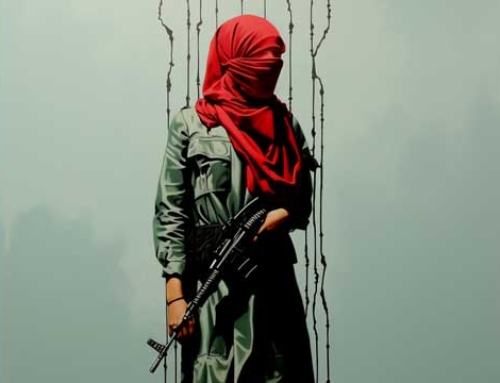The taxes imposed on Belgian diamond dealers yielded 68.4 mn euros last year, the so called Belgian carat tax, as compared to the government’s forecast of 50 mn euros in 2017 and to the country’s revenue of 51.2 mn euros in 2016.
Belgian Minister of Finance Johan Van Overtveldt said that the amount could still see the rise as the numbers concerned only advance payments. The diamond dealers payed the normal tax of 33.99% in 2017 and only 0.55% to 2.1% on their revenues, depending on the number of taxes they could deduce.
Before the taxes were imposed, the industry had paid only about 20 mn euros to the tax administration of the country.
Let me remind you what the Belgian Carat Tax is all about
The Parliament of Belgium passed the law regarding the Belgian Carat Tax on 16 December 2016. It took almost half a year for the Belgian politicians to come to this decision after the European Commission authorized the Belgian carat tax at the end of July of 2016, noting that diamond businesses in Belgium will continue to pay a decent share of taxes on their activity, but at the same time they will stop facing complications in estimating their inventories.
According to Belgian media, the tax will be levied on a yearly basis and is to provide EUR 50 million to the national budget. Even though the vast majority of diamantaires will pay higher taxes than before under this legislation, the new tax regime will greatly improve the predictability and stability in the diamond business, as traders will have a clear idea of tax deductions they are to pay.
The Belgian Carat has the huge benefit of predictability
“At long last, predictability and stability have arrived in the Antwerp diamond industry in the form of the new tax regime for all registered diamond companies. Today, the Belgian Parliament adopted the new regime, enshrined in law by the Belgian Federal Government, which will be applicable to all registered diamond traders as from tax year 2017 (income year 2016),” wrote the Antwerp World Diamond Centre (AWDC) at the tome of this decision.
The AWDC believes this will make the diamond business more attractive for banks in terms of financing. In addition, companies will be interested to conduct an independent assessment of their inventories, which in turn will increase the transparency of their transactions, as well as the confidence towards them on the part of banks.
It is expected that the tax law will be mandatory for wholesale companies based in Belgium in terms of their income derived from diamond trade, but excluding their other business activities. Diamond mining companies, which have offices in Belgium, as well as brokerage firms, diamond labs and other service providers do not fall under the Belgian Carat Tax.
Some industry observers believe that the Belgian Carat Tax enacted by the Belgian Parliament will increase the competitiveness of Antwerp’s diamond hub, enhancing its appeal to diamantaires and attracting additional business.
Federal Government expects the Belgian Carat Tax to yield three times more tax
Belgium’s wholesale diamond sector can expect to pay more than three times more tax per year under a new fiscal regime, called the carat tax, according to the European Commission (EC).
The new system would grant the Belgian diamond trade a tax system that is distinct from the one adopted by other industries. The European Commission (EC) approved the ‘Carat Tax’ July 29 after a year-long investigation into whether it constituted state aid by favoring certain companies.
Under the existing system, a company’s taxable income depends on profit – which is significantly affected by the value of its diamond stockpiles. The complexity of assigning a value on inventory makes tax assessment a challenging process for the Belgian administration, while litigation between traders and authorities creates legal uncertainty, the commission said.
“According to Belgium’s estimates, the wholesale diamond sector is likely to pay at least $56 million (EUR 50 million) more income tax every year,” the EC said in a statement.
Under the Belgian Carat Tax, a trader’s gross profit margin is fixed at 2.1 percent of revenue such that at least 75 percent of wholesale diamond traders would have paid higher taxes than they did under the current rules between 2012 and 2014. The net taxable income after deductions cannot be lower than 0.55 percent of turnover, or 0.65 percent during the first year that the Carat Tax is in force, the Antwerp World Diamond Centre (AWDC) pointed out.
Predictability and stability
Complex annual discussions over control and valuation of stock will no longer occur and fluctuations in inventory will not impact tax, the AWDC said. The regime will also improve predictability and stability, with traders able to monitor their corporate taxes throughout the year. This will make the industry more appealing to banks, this improving companies’ access to finance. It was also provide an incentive to businesses to get an independent valuation of their stock, increasing transparency and credibility towards banks, the AWDC added.
The Belgian Parliament will discuss and likely adopt the law by the year-end and the new rules will be applicable from tax year 2017. The new system will be compulsory for diamond-trading companies registered in Belgium, but applying only to diamond-trading revenue and not to other activities such as services. It will also not be mandatory for miners and their sales offices, but these businesses may opt in. Furthermore, the new law does not apply to brokers, diamond laboratories or other service providers.
“In a world with no systems, with fiscal chaos, everything becomes a excessive risk. And it becomes almost impossible to develop businesses in a decent and predictable manner.”
Sylvain Goldberg







